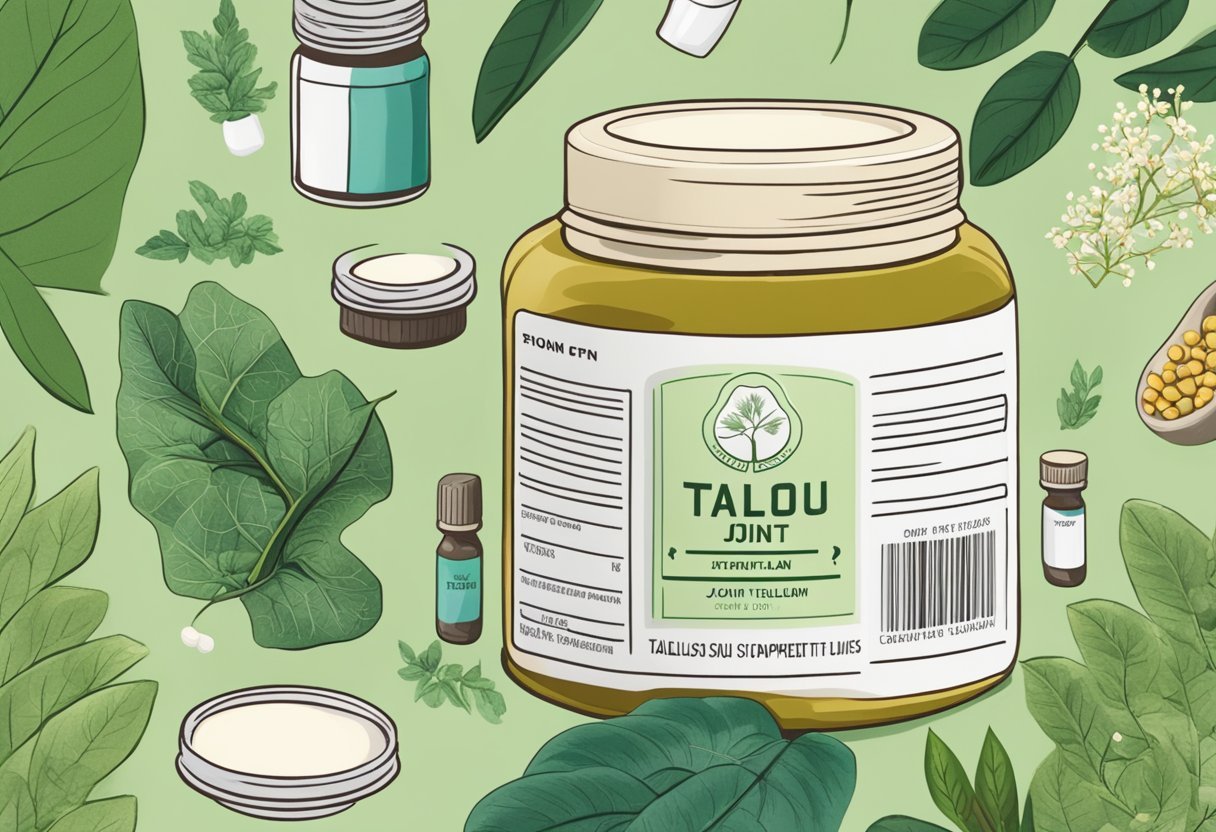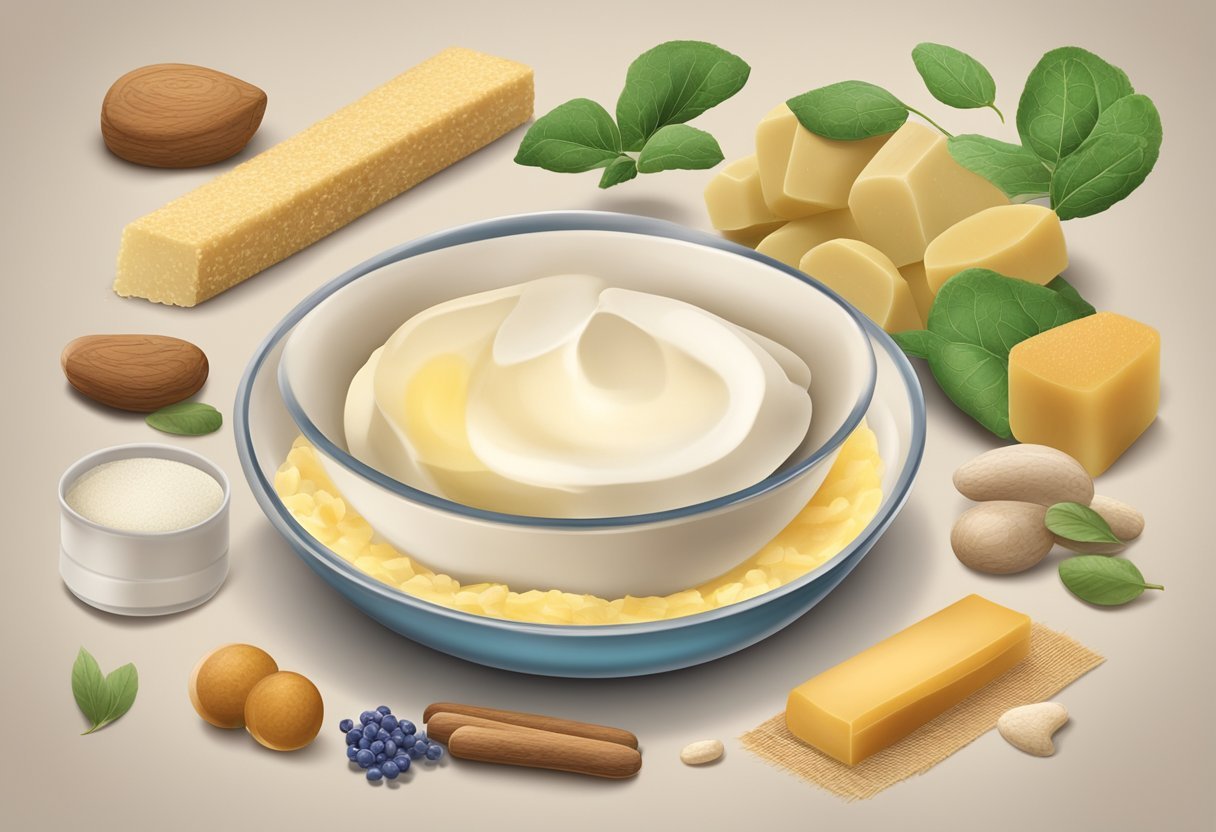Tallow for Arthritis Relief: What Tradition and Emerging Science Say
April 1, 2025 | by iprittie@gmail.com

Can tallow reduce inflammation?
Many people with arthritis are turning to traditional remedies like tallow to ease their joint pain.
Tallow, a traditional animal fat for inflammation, contains compounds that may help ease joint pain and support mobility. Increasingly viewed as a natural remedy for arthritis, tallow is gaining attention for its fatty acid content, particularly oleic acid, which may help reduce swelling and stiffness when applied topically or used in cooking.
Research suggests that tallow contains fatty acids with anti-inflammatory properties, particularly oleic acid, which may help alleviate arthritis symptoms when applied topically or consumed as part of a balanced diet.

Beef tallow products like tallow balms are becoming increasingly popular for muscle and joint support. Some formulations include additional ingredients like wintergreen or cinnamon, which may increase blood flow to affected areas.
Key Takeaways – Is Tallow Good For Arthritis?
- Tallow contains natural fatty acids that may help reduce inflammation in painful joints.
- Topical tallow balms offer a potentially effective complementary approach for managing arthritis symptoms.
- While promising, more clinical research is needed to fully validate tallow’s effectiveness for joint health.
Understanding Arthritis and Joint Pain

Arthritis is a common condition that affects millions of people worldwide. It causes inflammation, pain, stiffness, and swelling in joints, limiting mobility and reducing quality of life.
Boost your overall wellness by learning how tallow supports weight management and metabolic health.
Causes of Joint Pain and Arthritis
Joint pain can arise from various factors including age-related wear and tear, autoimmune responses, and genetic predisposition. In osteoarthritis, the most common form, the cartilage that cushions joints breaks down over time. This creates friction between bones, causing pain and inflammation.
Inflammatory triggers like infections or injuries can activate the immune system, leading to conditions like rheumatoid arthritis. In this case, the body attacks its own tissues, particularly joint linings.
Other causes include:
- Repetitive movements at work or during sports
- Excess body weight putting strain on weight-bearing joints
- Previous joint injuries
- Metabolic conditions like gout
Age is also a significant factor, with joint problems becoming more common as protective tissues naturally deteriorate.
Types of Arthritis Affecting the Joints
There are over 100 types of arthritis that can affect joints. The most prevalent include:
Osteoarthritis (OA): This degenerative disease affects cartilage and bones, causing pain and stiffness. It typically develops in hands, knees, hips, and spine.
Rheumatoid Arthritis (RA): An autoimmune condition where the immune system attacks joint linings. Unlike OA, it affects joints symmetrically and can cause systemic symptoms.
Psoriatic Arthritis: Affects people with psoriasis, causing joint pain, stiffness, and swelling alongside skin symptoms.
Gout: Results from uric acid crystal buildup in joints, causing sudden, severe pain attacks, often in the big toe.
Ankylosing Spondylitis: Primarily affects the spine but can impact other joints, potentially leading to fusion of vertebrae.
Diagnosis of Joint-Related Arthritis
Diagnosing arthritis typically involves multiple approaches. When joint pain persists for more than a few weeks, it’s time to see a doctor to prevent permanent damage.
The diagnostic process usually includes:
- Medical history: Discussing symptoms, family history, and lifestyle factors
- Physical examination: Checking for swelling, redness, warmth, and range of motion
Laboratory tests help confirm diagnosis:
- Blood tests for inflammation markers (ESR, CRP)
- Rheumatoid factor and anti-CCP antibodies for RA
- Analysis of joint fluid
Imaging tests provide visual evidence:
- X-rays show bone damage and cartilage loss
- MRI reveals detailed images of soft tissues
- Ultrasound detects inflammation in joint tissues
Early diagnosis is crucial as many treatments work best when started early, potentially slowing disease progression and preserving joint function.
Tallow For Joint Pain

Tallow contains specific compounds that may support joint health through its nutritional composition and anti-inflammatory properties. Research indicates these elements could play a role in managing joint conditions and maintaining mobility.
For those seeking arthritis-friendly fats, beef tallow may offer unique benefits through both topical and dietary use. Its traditional roots and compatibility with human biology make it a promising natural fat for sore joints.
Nutritional Composition of Tallow
Tallow is rich in fat-soluble vitamins that support various bodily functions. It contains vitamins essential for bone health, which can indirectly benefit joint structure.
The primary components of tallow include:
- Saturated fatty acids (approximately 50%)
- Monounsaturated fatty acids (about 42%)
- Small amounts of polyunsaturated fats
- Fat-soluble vitamins (A, D, E, K)
- Trace minerals
One noteworthy compound found in beef tallow extract is cis-9-cetylmyristoleate (CMO), which has been studied for its potential joint health benefits. This fatty acid derivative may help with cartilage protection and joint lubrication.
Discover why tallow vs. seed oils is the battle everyone needs to understand for better joint and heart health.
Potential Benefits of Tallow for Joints
Clinical research suggests tallow-derived compounds may support joint health in several ways. A Korean study found that beef tallow extract was both safe and effective for patients with arthritis, potentially offering relief from joint discomfort.
Tallow’s benefits for joints include:
- Reducing inflammation: Tallow contains compounds that may mitigate inflammatory cytokines, potentially easing joint pain.
- Supporting lubrication: The fatty acids in tallow might improve joint fluid viscosity, enhancing movement and reducing friction.
- Easing muscle tension: Topical applications like tallow balms can soothe muscles surrounding joints, providing comprehensive relief.
These properties make tallow a potentially valuable option for those experiencing joint fatigue or seeking to maintain mobility as they age.
Comparison With Other Treatment Options

When evaluating tallow for arthritis management, it’s important to understand how it compares to conventional and alternative treatments. Several approaches exist with varying effectiveness, side effects, and scientific support.
NSAIDs and Anti-Inflammatory Medications
NSAIDs (non-steroidal anti-inflammatory drugs) remain the most common first-line treatment for arthritis symptoms. Unlike tallow, these medications have extensive clinical research supporting their effectiveness in reducing inflammation and pain.
The key differences:
- Effectiveness: NSAIDs work quickly (within hours) while tallow extracts may take weeks to show effects
- Side effects: NSAIDs can cause stomach ulcers, increased bleeding risk, and kidney problems with long-term use
- Availability: NSAIDs are widely available over-the-counter or by prescription
Some studies of cis-9-cetylmyristoleate (a component found in beef tallow) have shown promising results in animal models, but the evidence isn’t as robust as for pharmaceutical options.
Nutritional Supplements and Natural Therapies
Many people explore natural options before or alongside conventional medications. Tallow fits into this category alongside several well-studied supplements.
Popular arthritis supplements:
- Omega-3 fatty acids (fish oil): Strong evidence for anti-inflammatory effects
- Turmeric/curcumin: Moderate evidence for pain reduction
- Ginger: Some evidence for inflammation reduction
- Cinnamon: Limited evidence for arthritis benefits
Unlike some plant-based oils that are recommended for arthritis, beef tallow has fewer studies supporting its use. However, research suggests that saturated fats like those in beef tallow may actually contribute to inflammation in some cases.
The Arthritis Foundation provides guides on supplements with stronger evidence bases than tallow.
Physical Therapy and Exercise
Non-dietary approaches remain essential for arthritis management regardless of whether you use tallow or other supplements.
Key benefits of movement therapies:
- Maintains joint flexibility and range of motion
- Strengthens supporting muscles around affected joints
- Improves overall function and quality of life
- Helps maintain healthy weight (reducing joint stress)
Unlike dietary interventions alone, physical therapy and regular exercise have been conclusively shown to improve outcomes for most arthritis patients.
While tallow might complement these approaches, it should not replace them. The most effective arthritis management typically combines appropriate medication, physical activity, and dietary considerations tailored to the specific type and severity of arthritis.
Tallow in the Diet: Incorporation and Considerations

Adding tallow to your daily diet requires thoughtful planning to balance its potential benefits for joint health with overall nutritional needs. The high saturated fat content makes moderation essential, while proper cooking techniques can maximize its usefulness.
This makes tallow one of the few traditional fats for joint health with potential anti-inflammatory effects, especially when derived from grass-fed animals.
Daily Intake and Cooking with Tallow
Tallow can be incorporated into your diet in several practical ways. For cooking, use 1-2 tablespoons of tallow in place of other oils when sautéing vegetables or frying eggs. Its high smoke point (400°F/204°C) makes it excellent for high-heat cooking without oxidation.
Many people find success using small amounts (1-2 teaspoons) of tallow to roast vegetables, giving them a rich flavor while potentially providing anti-inflammatory benefits.
For joint health specifically, research suggests consistency matters more than quantity. Regular small amounts may be more beneficial than occasional large servings. Studies have shown that dietary saturated fats like those in beef tallow can impact pain behavior in osteoarthritis, highlighting the importance of moderation.
Store tallow in a glass container at room temperature for easy daily access or refrigerate for longer storage.
Balancing Tallow with Other Healthy Fats
Tallow can be just one part of a diverse fat intake profile. Balance tallow consumption with other healthy fats, especially those rich in omega-3 fatty acids from sources like fatty fish, flaxseeds, and walnuts.
A beneficial approach includes:
- 30% tallow or other saturated fats
- 40% monounsaturated fats (olive oil, avocados)
- 30% polyunsaturated fats (especially omega-3s)
This balance helps maximize tallow’s potential benefits while avoiding excessive saturated fat intake.
Pair tallow-cooked foods with plenty of fruits and vegetables, which provide antioxidants that complement tallow’s nutrient profile. Whole grains can also help create balanced meals that support overall inflammation management.
For daily activities, tallow can be used in morning cooking, while lighter fats might be preferable later in the day to aid digestion.
The Impact of Lifestyle on Joint Health
Your daily habits play a crucial role in joint health and can significantly influence arthritis symptoms. Making targeted lifestyle changes can help reduce pain, improve mobility, and enhance overall joint function.
Role of Exercise and Weight Management
Regular physical activity is essential for maintaining healthy joints. Low-impact exercise such as swimming, walking, and cycling helps strengthen the muscles around joints without causing additional stress.
Weight management is equally important. Excess weight places additional pressure on weight-bearing joints like knees and hips. Research shows that losing just 10 pounds can reduce knee joint stress by up to 40 pounds.
For individuals with arthritis, maintaining a healthy weight through consistent exercise and proper nutrition can significantly reduce pain and slow disease progression. Even small amounts of movement can improve joint function and reduce stiffness.
Exercise doesn’t have to be intense to be effective. Short, gentle sessions throughout the day can be more beneficial than one lengthy workout for those with joint pain.
Improving Flexibility and Range of Motion
Stretching and flexibility exercises are vital for maintaining proper range of motion in joints affected by arthritis. Regular stretching helps prevent stiffness and can reduce pain during daily activities.
Gentle yoga and tai chi are particularly beneficial. These practices combine stretching with mindfulness, which can help manage pain perception while improving physical function.
Morning stretching routines can be especially helpful as many people with arthritis experience increased stiffness after waking. Just 5-10 minutes of gentle movement can improve mobility throughout the day.
Consistency is key. Daily flexibility exercises preserve joint function better than occasional intense sessions. Heat therapy before stretching can enhance results by relaxing tight muscles around affected joints.
Dietary Habits and Nutrition for Joints
What we eat directly impacts joint health. An anti-inflammatory diet rich in healthy fats, antioxidants, and fiber can help reduce joint inflammation and pain.
Omega-3 fatty acids found in fatty fish, walnuts, and flaxseeds have natural anti-inflammatory properties. Colorful fruits and vegetables provide antioxidants that fight oxidative stress in joints.
Some foods may worsen inflammation in certain individuals. Common triggers include processed foods, refined sugars, and excessive alcohol. Identifying personal trigger foods through an elimination diet can be helpful.
Hydration also plays a crucial role in joint health. Water helps maintain the synovial fluid that lubricates joints and provides cushioning. Aim for at least 8 glasses of water daily.
Maintaining adequate vitamin D and calcium levels supports bone health, which directly impacts joint function. Many people with arthritis benefit from supplementation under medical supervision.
Clinical Evidence: Tallow and Joint Health
Research on tallow’s effects on joint health shows mixed results. Scientists have investigated both pure tallow and its specific fatty acid components to understand potential benefits and limitations.
Systematic Review of Current Research
Studies examining beef tallow extract containing cis-9-cetylmyristoleate (CMO) have shown inconsistent results. According to clinical trials, some patients experienced relief from osteoarthritis symptoms when using beef tallow extract as an adjuvant treatment.
However, clinical trials showed conflicting results for CMO in preventing and treating arthritis symptoms. This suggests the need for more rigorous research.
In animal studies, researchers found that cis-9-cetylmyristoleate was effective in reducing arthritis symptoms. Yet when tested on humans, the results weren’t as consistent or conclusive.
The anti-inflammatory properties of fatty acids in tallow, particularly oleic acid, may explain some positive effects on inflammatory joint conditions.
Personal Anecdotes Vs. Scientific Proof
Many individuals report joint pain relief after using tallow-based products, but these personal experiences don’t constitute scientific evidence.
Anecdotal reports often lack controls for placebo effects, lifestyle changes, or other treatments that might influence outcomes. Scientific studies require controlled conditions to establish true cause and effect.
Some research indicates that certain saturated fatty acids in tallow might actually contribute to joint problems. A study showed that rats fed beef tallow developed signs of metabolic syndrome along with cartilage degradation.
While tallow contains fat-soluble vitamins important for bone health, this doesn’t necessarily translate to direct joint benefits.
The scientific community needs larger, well-designed clinical trials to determine if tallow truly offers measurable benefits for joint health beyond anecdotal evidence.
Addressing Symptoms: Stiffness, Swelling, and Pain
People with arthritis often struggle with joint pain and stiffness that can limit daily activities. Tallow contains compounds that may help address these common symptoms through multiple pathways.
Tallow’s Effectiveness in Reducing Symptoms
Tallow contains anti-inflammatory fatty acids that may help reduce inflammation in affected joints. These natural compounds can potentially decrease swelling and alleviate pain when applied topically or consumed as a supplement.
Many users find that topical tallow for arthritis provides localized relief, especially when combined with warming ingredients like cinnamon or wintergreen.
Animal fat-based tallow is rich in vitamins A, D, E, and K, which support joint health and may help decrease tenderness around affected areas. The stearic acid in tallow can penetrate skin layers to deliver relief directly to painful joints.
Morning stiffness, a common complaint among arthritis sufferers, might be improved with regular tallow application. The fat’s consistency allows it to be easily massaged into joints, which can increase blood flow and reduce pain.
Some users report noticeable improvement in mobility after several weeks of consistent use, though results vary by individual.
Complementary Therapies and Lifestyle Adjustments
While tallow may help manage symptoms, combining it with other approaches often yields better results. Staying active with gentle exercise like swimming or walking can significantly improve joint function and reduce stiffness.
Weight management is crucial as excess pounds put additional pressure on joints. Even modest weight loss can substantially decrease pain in weight-bearing joints like knees and hips.
Applying tallow alongside anti-inflammatory gels may enhance symptom relief. Heat and cold therapy can complement tallow treatments—heat loosens stiff joints while cold reduces acute inflammation.
Dietary adjustments matter too. Consuming anti-inflammatory foods while using tallow may provide synergistic benefits for managing swelling and pain.
Safety Profile and Potential Risks of Tallow
While tallow offers potential benefits for joint health, it’s important to understand possible safety concerns before incorporating it into your wellness routine. Certain individuals may experience adverse reactions or complications.
Allergies and Interactions with Medications
Individuals with beef allergies should avoid beef tallow products completely. Allergic reactions can range from mild skin irritation to severe anaphylaxis in sensitive people.
Some clinical trials of beef tallow extract have shown it to be generally safe for arthritis patients. However, these studies are limited in scope and duration.
Tallow may interact with certain medications, particularly:
- Blood thinners
- Cholesterol-lowering drugs
- Anti-inflammatory medications
People taking prescription medications should consult healthcare providers before using tallow supplements. This is especially important for those with existing heart conditions or cholesterol concerns.
Patient Perspectives: Living with Arthritis
Living with arthritis affects many aspects of daily life, from performing simple tasks to maintaining emotional well-being. People with arthritis develop various strategies to manage their condition and improve their quality of life.
Managing Arthritis on a Day-to-Day Basis
Many arthritis patients face joint pain and reduced mobility that affects their ability to perform everyday activities. Simple tasks like opening jars, climbing stairs, or even getting dressed can become challenging.
Morning stiffness is particularly common, with many reporting that their knee pain and hand pain are worst during the first hour after waking. Some find relief through gentle stretching routines or warm showers.
Most arthritis patients develop personalized routines to manage their symptoms. This often includes scheduled rest periods throughout the day and modified approaches to household chores.
Emotional well-being is equally important. Many patients report that maintaining a positive outlook helps them cope with hip pain and mobility limitations.
Success Stories of Tallow for Joint Relief
Some arthritis patients have reported positive experiences using tallow-based remedies for joint pain relief. These accounts typically describe applying tallow topically to affected joints, particularly knees and hands.
Users often mention appreciating tallow’s natural origin compared to commercial creams. Many describe a warming sensation after application that seems to penetrate deep into painful joints.
One common pattern in success stories involves consistent application—typically twice daily—rather than occasional use. Users report that this consistency appears to provide cumulative benefits over time.
Those with hand pain particularly note improvements in dexterity and reduced morning stiffness after several weeks of tallow application. Several users mention being able to return to hobbies like gardening or knitting that had previously become difficult.
Advanced Treatments and Innovations in Joint Care
While traditional remedies like tallow may offer relief for some, modern medicine continues to advance with sophisticated treatments for joint conditions. These innovations range from surgical interventions to cutting-edge research that shows promise for arthritis sufferers.
Surgical Interventions and Joint Replacement
Joint replacement surgery has evolved significantly in recent years. Doctors now use minimally invasive techniques that reduce recovery time and improve outcomes for patients with severe joint damage.
Joint replacement remains one of the most effective treatments for end-stage arthritis when other therapies fail. Modern implants use advanced materials that last longer and better mimic natural joint function.
Computer-assisted surgery helps surgeons achieve precise alignment and positioning of implants. This technology improves accuracy and can lead to better long-term results for patients.
Partial joint replacements preserve more of the natural joint when only specific areas are damaged. This option often results in faster recovery and more natural movement for appropriate candidates.
Emerging Research and Future Prospects
Scientists are investigating regenerative medicine approaches that could revolutionize joint care. Stem cell therapy and platelet-rich plasma injections aim to stimulate the body’s natural healing processes.
Hyaluronic acid supplements show promise as both oral and injectable treatments. These compounds may help lubricate joints and reduce inflammation naturally.
While clinical evidence for joint support with beef tallow is limited, anecdotal use continues to grow, especially among those avoiding synthetic creams or pharmaceuticals.
Researchers are developing smart implants with sensors that monitor joint health and detect early signs of infection or loosening. These technologies could alert patients and doctors before serious complications develop.
Anti-inflammatory compounds like SAM-e have shown effectiveness in clinical studies. This supplement may help reduce pain and improve mobility for people with osteoarthritis.
Have questions or curious to learn more? We’d love to hear from you—reach out anytime through our contact page!
RELATED POSTS
View all



